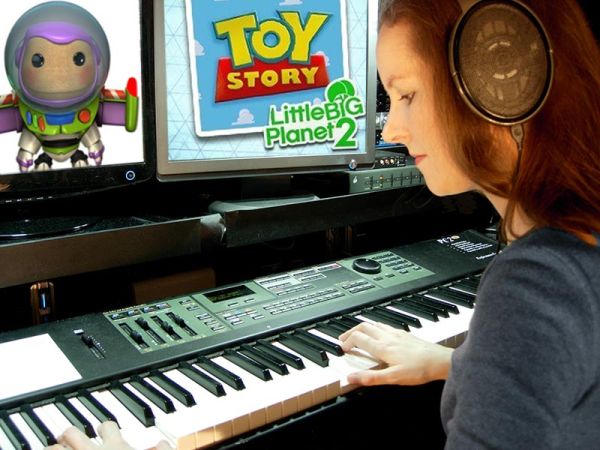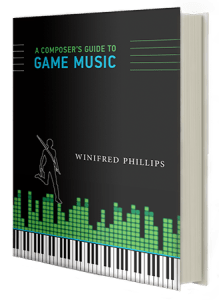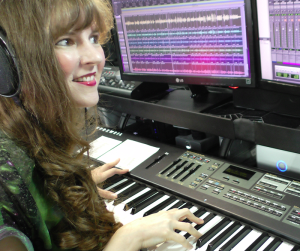
Featured Blog | This community-written post highlights the best of what the game industry has to offer. Read more like it on the Game Developer Blogs or learn how to Submit Your Own Blog Post
Music Game Plan: Tactics for the Video Game Composer (Part Four)
Video game music composer Winifred Phillips explains the popular vertical layering interactive music technique, with music examples and a video tutorial of techniques from one of her game projects (LittleBigPlanet2 Toy Story from Sony Europe).

 Welcome to the fourth and final installment of my four-part series on the basic structure and utility of interactive music systems, including video demonstrations that clarify the concepts. In Part One of this series, we examined a simple Horizontal Re-Sequencing model of interactive music, as used in the Speed Racer Videogame from Warner Bros. Interactive. Part Two of this series explored the more advanced Horizontal Re-sequencing system of the Spore Hero game from Electronic Arts. In Part Three of this series, we learned about the simple Vertical Layering system of The Maw video game. So now let's take a look at a much more ambitious execution of vertical layering.
Welcome to the fourth and final installment of my four-part series on the basic structure and utility of interactive music systems, including video demonstrations that clarify the concepts. In Part One of this series, we examined a simple Horizontal Re-Sequencing model of interactive music, as used in the Speed Racer Videogame from Warner Bros. Interactive. Part Two of this series explored the more advanced Horizontal Re-sequencing system of the Spore Hero game from Electronic Arts. In Part Three of this series, we learned about the simple Vertical Layering system of The Maw video game. So now let's take a look at a much more ambitious execution of vertical layering.
Our discussion of Vertical Layering will focus on its use in one of my projects: The LittleBigPlanet 2: Toy Story video game (photo above). As opposed to the three layer music system we discussed in the previous article, this vertical layering music model for the LittleBigPlanet 2: Toy Story game features six layers, all able to function simultaneously. To make this possible, the layers needed to be most carefully constructed. In my book, A Composer's Guide to Game Music, I talked at length about how musical events can best be vertically constructed for the purposes of such complex interactive implementation. That discussion included an exploration of what 'vertical' means in the context of such a music system:
 "In music theory, the word "vertical" indicates a simultaneous event such as the sounding of several concurrent notes in a chord. We can understand the applicability of the word by picturing the chord as notated on a single staff, the notes stacked on top of each other. A chord is always notated vertically, and all of the pitches of the chord are sounded at the same time. Vertical layering operates under the principle of simultaneous, stacked musical components."
"In music theory, the word "vertical" indicates a simultaneous event such as the sounding of several concurrent notes in a chord. We can understand the applicability of the word by picturing the chord as notated on a single staff, the notes stacked on top of each other. A chord is always notated vertically, and all of the pitches of the chord are sounded at the same time. Vertical layering operates under the principle of simultaneous, stacked musical components."
The video embedded below uses the "Toy Story Western Theme" as an example of complex vertical layering involving six simultaneous music files playing in synchronization. The visual examination of this track's interactive components is conducted in the popular Pro Tools application (for easy visual reference).
 The track's musical style reflects a western bluegrass instrumentation suitable for adventures involving the famous Toy Story cowboy characters "Woody" and "Jessie" (as pictured). In the video, the track is described as serving "two purposes: it had to provide a low-keyed atmosphere, and it also had to deliver high energy. Remember, all six layers of an interactive track like this have to able to be played all at once, so the composition of this track was fairly tricky."
The track's musical style reflects a western bluegrass instrumentation suitable for adventures involving the famous Toy Story cowboy characters "Woody" and "Jessie" (as pictured). In the video, the track is described as serving "two purposes: it had to provide a low-keyed atmosphere, and it also had to deliver high energy. Remember, all six layers of an interactive track like this have to able to be played all at once, so the composition of this track was fairly tricky."
While the construction of such an interactive system may seem to pose awesome difficulty for a game music composer, the rewards can be well worth the effort, as is discussed in the video: "The layers of an interactive track composed with the vertical layering technique are designed to be played in many different combinations... These combination possibilities give the game development team choices when they are implementing the music."
In the abstract, these ideas can be difficult to wrap our heads around, so let's watch the video and see this practical example of a six-layer interactive music system in action:
I hope the video helps to clarify how vertical layering functions and how a video game composer can create music in this interactive music system! In case you'd like to hear the entire "LittleBigPlanet 2: Toy Story Western Theme" track, I've included a YouTube video featuring the full track:
Well, that brings this four-part series of articles in the fundamentals of interactive music to a close! I hope you enjoyed these articles, and that they helped answer some questions about how this type of music functions. Please leave any questions or thoughts in the comments section below, and thanks very much for reading!
 Winifred Phillips is an award-winning video game music composer whose most recent project is the triple-A first person shooter Homefront: The Revolution. Her credits include five of the most famous and popular franchises in video gaming: Assassin’s Creed, LittleBigPlanet, Total War, God of War, and The Sims. She is the author of the award-winning bestseller A COMPOSER'S GUIDE TO GAME MUSIC, published by the Massachusetts Institute of Technology Press. As a VR game music expert, she writes frequently on the future of music in virtual reality video games.
Winifred Phillips is an award-winning video game music composer whose most recent project is the triple-A first person shooter Homefront: The Revolution. Her credits include five of the most famous and popular franchises in video gaming: Assassin’s Creed, LittleBigPlanet, Total War, God of War, and The Sims. She is the author of the award-winning bestseller A COMPOSER'S GUIDE TO GAME MUSIC, published by the Massachusetts Institute of Technology Press. As a VR game music expert, she writes frequently on the future of music in virtual reality video games.
Follow her on Twitter @winphillips.
Read more about:
Featured BlogsAbout the Author(s)
You May Also Like







.jpeg?width=700&auto=webp&quality=80&disable=upscale)








